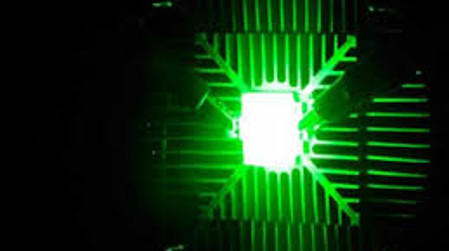New QD Clustering Process Boosts Display Color Performance
BELFAST, IRELAND—An international team of researchers has developed a method to cluster together quantum dots to boost fluorescence and deliver a significant increase the number of colors that can be displayed, leading to what they foresee as a new generation of improved HDTV.

The team, made up of scientists from Queen’s University Belfast and experts from Florida State University, ETH Zurich, Empa-Swiss Federal Laboratories for Materials Science and Technology and National Taiwan University of Science and Technology, National Synchrotron Radiation Research Center, calls this new process aggregation-induced emission, or AIE, according to a press release from Queen’s University Belfast.
The researchers created quantum dots containing methylammonium lead bromine. They found that by placing fine layers between different materials, or lamellar structures, the material re-emitted much of the light it absorbed and created colors that were quite intense, it said.
“Through this research discovery, we anticipate that the number of colors a display can present can be increased more than 50 percent,” the press release quotes Queen’s University team lead Dr. Elton Santos as saying. “In practice, this means that we may have a new type of ‘high-definition’ because of the number of color combinations that the material can display. Therefore, the next HD generation is just as close as three to four years away.”
Normally, brightness degrades as quantum dots aggregate forming crystals; however, the AIE process actually achieves higher brightness levels, said Chih-Jen Shih, a professor at ETH Zurich.
To date, the researchers have used the AIE process to create what it said is the brightest green ever achieved by any nanomaterial. When integrated with red and blue, the number of color combinations could exceed the 1 billion colors that are achievable with the latest quantum dot technology due for release to the market, said Santos.
Next up is finding a similar process for blue and red, which will enable the display to replicate all of the colors that can be captured by the human eye, the release said.
Get the TV Tech Newsletter
The professional video industry's #1 source for news, trends and product and tech information. Sign up below.
The new process, which has been reported in Science Advances, offers the added benefit of being highly energy efficient, added Shangchao Lin, the Florida State University research lead.
Phil Kurz is a contributing editor to TV Tech. He has written about TV and video technology for more than 30 years and served as editor of three leading industry magazines. He earned a Bachelor of Journalism and a Master’s Degree in Journalism from the University of Missouri-Columbia School of Journalism.

